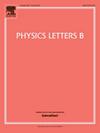Cosmological implications of f(R,Σ,T) gravity: A unified approach using OHD and SN ia data
IF 4.3
2区 物理与天体物理
Q1 ASTRONOMY & ASTROPHYSICS
引用次数: 0
Abstract
This paper investigates the cosmological implications of the modified gravity framework known as gravity, focusing on its potential to unify and extend current cosmological models. The theory, introduced by Bakry and Ibraheem in 2023, combines the Ricci scalar, a scalar parameter representing torsion or other geometric properties, and the trace of the energy-momentum tensor. By analyzing observational Hubble data (OHD) and the Pantheon compilation of Type Ia Supernovae (SN Ia), we explore how this framework provides the accelerated expansion of the universe, the nature of dark energy, and phenomena like the Big Rip singularity. Employing the Friedmann-Robertson-Walker (FRW) metric and solving the modified field equations, we derive key cosmological parameters such as the Hubble constant and matter energy density parameter. These parameters are constrained through statistical analysis of observational data, yielding and from OHD, and from SN Ia. The evolution of the equation of state (EoS) parameter, isotropic pressure, and energy density is also investigated. By considering energy conditions and stability criteria, the study highlights the viability of gravity as an alternative framework to General Relativity and models. Our findings affirm the model's compatibility with current observational evidence and its potential to the universe's past and future dynamics.
求助全文
约1分钟内获得全文
求助全文
来源期刊

Physics Letters B
物理-物理:综合
CiteScore
9.10
自引率
6.80%
发文量
647
审稿时长
3 months
期刊介绍:
Physics Letters B ensures the rapid publication of important new results in particle physics, nuclear physics and cosmology. Specialized editors are responsible for contributions in experimental nuclear physics, theoretical nuclear physics, experimental high-energy physics, theoretical high-energy physics, and astrophysics.
 求助内容:
求助内容: 应助结果提醒方式:
应助结果提醒方式:


